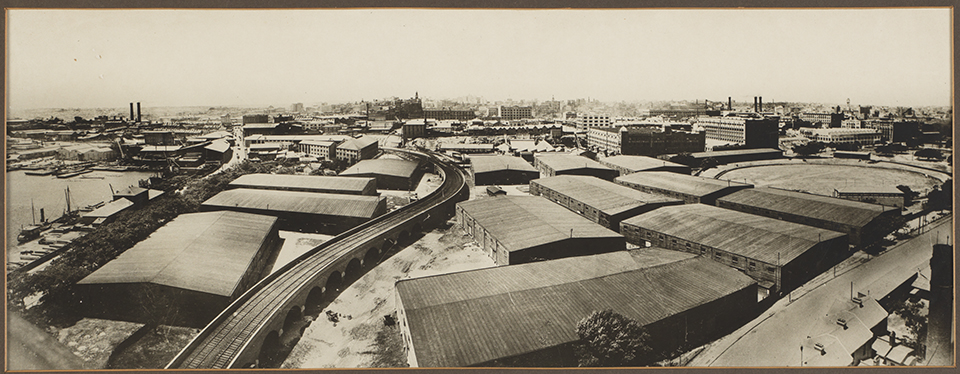The Dictionary of Sydney was archived in 2021.
Wentworth Park
Citation
Persistent URL for this entry
To cite this entry in text
To cite this entry in a Wikipedia footnote citation
To cite this entry as a Wikipedia External link
Wentworth Park
[media]Wentworth Park is surrounded by Bridge Road, Wattle Street, William Henry Street and Wentworth Park Road, Ultimo. The area was originally the swampy mouth of the creek variously known as Black Wattle or Blackwattle Creek.
Between the 1830s and 1860, various noxious industries, including abattoirs and boiling works, were established along the shore. The pollution from these industries so contaminated the swamp that, even after they moved in 1860, the local council lobbied to have the area filled in because of the stench that continued to rise from the water and mud.
Filling the creek and the head of the swamp commenced in 1876 and continued until 1880. Silt dredged from the harbour was used to carry out the process and numerous sea walls and dykes were constructed as part of the programme. Once the area was filled, trustees were appointed to manage the new park and a competition was announced to design the new facility. By 1882, ovals, greens, paths and lakes had been created. The park was named after Australia's first native-born politician, William Charles Wentworth (1790–1872).
In the 1880s and 1890s, the park was the focus for community activities including concerts, celebrations, moving picture shows and in particular, sport. The early years of the twentieth century saw the removal of the lakes, and the establishment of a kindergarten in 1914.
[media]During World War I a large number of timber sheds were erected on the northern sports ground to store wool for the war effort. These sheds remained for some years after the end of the war. In 1919 the high-level railway viaduct was built, which now carries the Central to Lilyfield light rail.
[media]In October 1932 greyhound racing began in the park. Eventually brick walls, grandstands, tote buildings and kiosks came to dominate the landscape. During World War II, American troops established a camp in Wentworth Park and more wool stores were built, although these were demolished in the 1950s. In 1979 the National Coursing Association applied to construct a large new grandstand which was completed in 1985.
References
Manidis Roberts Consultants, Wentworth Park Plan of Management, 1990




